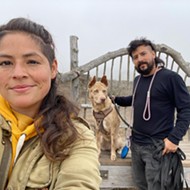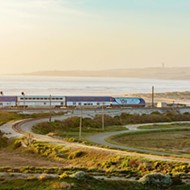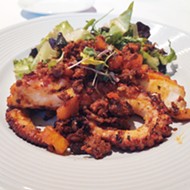[{
"name": "Ad - Medium Rectangle CC01 - 300x250",
"id": "AdMediumRectangleCC01300x250",
"class": "inlineCenter",
"insertPoint": "8",
"component": "2963441",
"requiredCountToDisplay": "12"
},{
"name": "Ad - Medium Rectangle LC01 - 300x250",
"id": "AdMediumRectangleCC01300x250",
"class": "inlineCenter",
"insertPoint": "18",
"component": "2963441",
"requiredCountToDisplay": "22"
},{
"name": "Ad - Medium Rectangle LC09 - 300x250",
"id": "AdMediumRectangleLC09300x250",
"class": "inlineCenter",
"insertPoint": "28",
"component": "3252660",
"requiredCountToDisplay": "32"
}]
# What's new for 2008? Lacking a crystal ball, I can't even pretend to make a prediction about the 2007 harvest yet. I can say that some wines I've tasted in stainless steel tanks and in barrels were pretty impressive, but it remains to be seen how the final versions will turn out once they're bottled. Not all of them are as likeable as they were while maturing in oak barrels. Fortunately, I can provide predictions for a few local winemakers: These talented characters, as individual and unique as artists of any genre, continue to raise the bar when it comes to making great Central Coast wines. This allows me to safely say that there's plenty to look forward to in the New Year.
I first called on wine rock star John Alban of Alban Vineyards in Edna Valley, who's not likely to care for that title, but he's earned it with all the media focus on him over the past five years. He also noted that we'll be seeing more Mourvedre in the market thanks to outstanding results he and others had in producing this red Rhone varietal. Alban also said he likes the new green focus at estate wineries.
"You're going to see the wine industry, as it has over the last 10 years, become a pretty darn responsible and green trade," he said. "People are going to greater extremes, not so much green as recognizing the need to being environmentally responsible and enologically responsible."
Alban sees a continued symbiosis between winemaking and winegrape growing and a healthy stewardship of the land. Rather than mowing his cover crops, he now has sheep grazing them: "The more gentle we are with the land, the more loving are our wines in return."
One of the Central Coast's younger talents, winemaker Paul Wilkins, has begun an exciting new venture at Rancho Arroyo Grande. This estate has undergone many changes since I first visited it in 2000, when they started planting vineyards. But its previous owners didn't stay committed to their original goals. Last June, it was purchased by Christopher J. Conway of Santa Barbara. His sons Gareth and Tom and daughter Gillian are now managing the 3,500-acre estate, and they live on the ranch. Wilkins said that the 240-acre vineyard will also be restored to low-yield, high-quality production. Although Wilkins consults for Hug and Per Bacco wineries and has his own projects with James Ontiveros in Native9 and Alta Maria, he admits that he was intrigued when the Conways wanted to hire him as their consultant.
"People [in the wine industry] have talked about the rebirth of this property being like a Phoenix: Everyone thought this place had potential that had not been explored," Wilkins explained. "The Conways are meticulous and conscientious about this place, and they have a goal to make the best wines possible from this site. That's why I became so interested in working with them."
Although they're keeping the ranch name because it was a Spanish land grant, the Conways will change the brand to reflect their family name. The Conways have also begun building the state-of-the-art winery that was originally planned for Rancho Arroyo Grande. Wilkins said that he continues to be impressed by the Conways, who've continually proven their commitment over the last six months: "They're not willing to compromise anything in reaching their goal to bring this property back to a quality standpoint."
Another maverick I favor is winemaker Mike Sinor, who's working on an exciting new project named Ancient Peaks at Rancho Santa Margarita (read about it in "Three families, one wine," from the Aug. 16, 2007, New Times). Working with the Filipponi, Rossi, and Wickstrom families, Sinor is ecstatic about the potential of his project in the southernmost part of the Paso Robles wine appellation. After one year on the project, the young winemaker--who learned his craft in Edna and Santa Maria valleys--admitted he's gained renewed respect for Paso Robles:
"I'm finding Paso Robles a fantastic area. The geographical aspect here has a lot to offer to a lot of different players," Sinor enthused. "They've got it all here: the wines, the restaurants. They haven't begun to realize the attention they're going to get over the next two years."
When you hear such enthusiasm from winemakers with a local history like these men, you can count on good things to come in the New Year.
INFOBOX: Wine lovers must read this book
Unlike most guide books to San Luis Obispo wine country now available in tasting rooms and book stores, Paso Robles: An American Terroir was written for people truly passionate about wine, whether professionals or collectors. The authors--Thomas J. Rice, Ph.D., and Tracy G. Cervellone C.W.E.--provide an outstanding compendium about soils, vines, wines, and the interesting characters who made Paso Robles the outstanding, high-quality wine growing region it is today.
Rice provides detailed explanations of the various soils and climates of Paso Robles' prime wine growing regions (usually referred to as American Viticultural Areas, AVAs, or the French appellations). But don't let the book's university level of detail scare you off. It's a great resource for the wine aficionado who doesn't plan to grow grapevines, but does want to better understand this ultimately fascinating beverage.
The truth is, I can't imagine any vineyard manager or winemaker who's involved in vineyard decisions not owning this book as a resource. This isn't just for Paso Roblans either--the appendices address winegrape growing applicable internationally. From Appendix A, a case study on the soil survey report for Carmody McKnight in the Adelaida Hills district of Paso Robles, Rice's information would help anyone who plans to grow winegrapes.
For consumers, the tasting room guide provides details about the winemaking style of many artisans like Steve Goldman of Stephen's Cellar on York Mountain. The authors provide details of Goldman and his father's pioneering work for the York Mountain AVA, though it appears as one of Paso's newer brands. Another great story is Chateau Margene, which owner and winemaker Michael Mooney modestly describes as a micro-property with his 6-acre vineyard devoted to Bordeaux varietals. Is it any wonder that so many aspiring winemakers are drawn by the qualities of Paso Robles' wines? This excellent guide is available at SLO County winery tasting rooms or online at www.pasoterroir.com.
Contact New Times' Cuisine columnist at [email protected].









